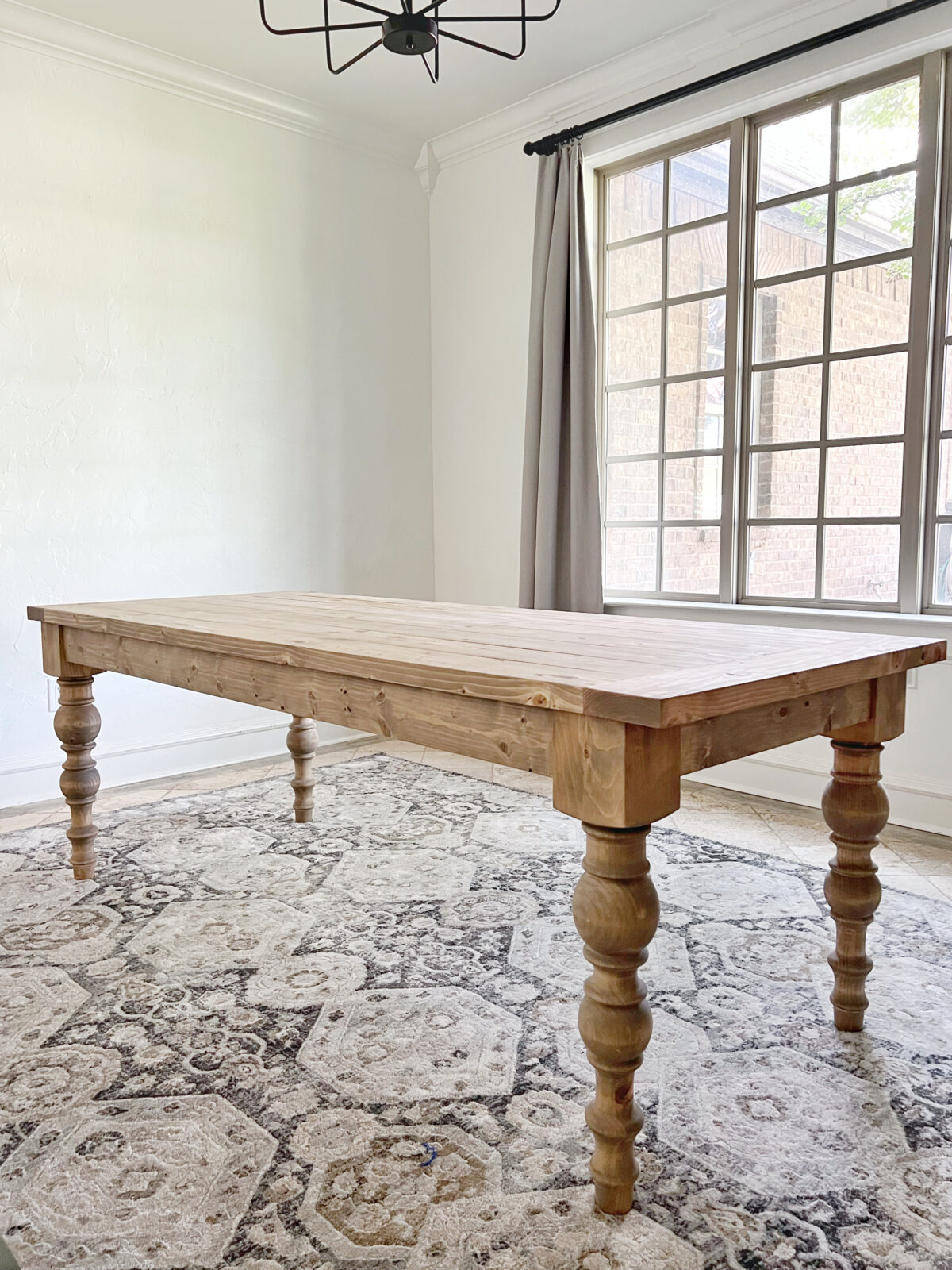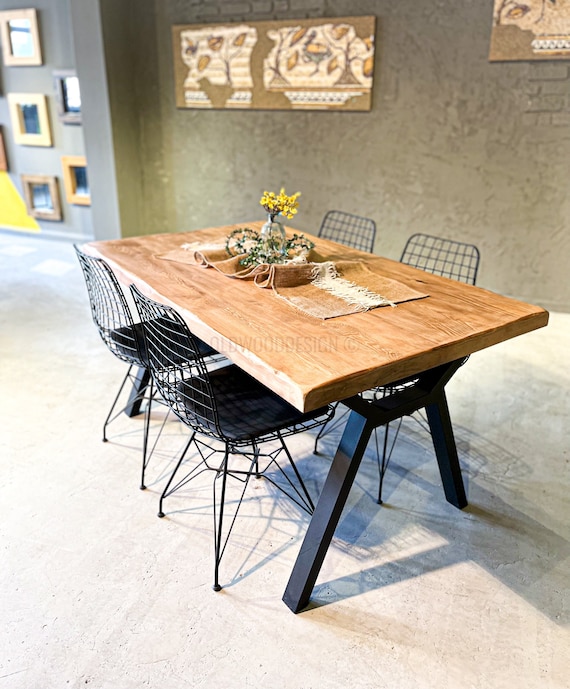Improve Your Eating Experience with Traditional Dining Table Legs Wood
Key Elements to Bear In Mind for Eating Table Legs Wood Choices
When selecting wood for dining table legs, a number of important elements require cautious consideration to ensure both performance and visual allure. The option of timber type, defined by its sturdiness and one-of-a-kind grain patterns, plays an essential duty in the general design and long life of the piece.
Wood Kind and Qualities
When selecting wood for eating table legs, it is crucial to understand the unique features of different timber types. Various woods provide distinct benefits and disadvantages, influencing both the toughness and aesthetic appeal of the completed product.
Hardwoods, such as oak, maple, and cherry, are generally favored for their stamina and resistance to use. Oak, known for its impressive durability, also includes a famous grain that can include personality to the table. Maple supplies a smooth surface area and is much less vulnerable to warping, making it a trusted selection for functional furnishings. Cherry timber, with its abundant color that deepens over time, offers an elegant look but might need even more upkeep to stop scrapes.
On the other hand, softwoods like pine and fir are more economical and simpler to collaborate with, yet they are much less durable than hardwoods. Pine is lightweight and features a cozy, rustic look, making it a preferred choice for informal dining setups. Nonetheless, it is a lot more vulnerable to scrapes and dents.
Understanding these characteristics will help in making an educated choice to make sure the legs of the table satisfy both aesthetic and practical requirements.
Grain Patterns and Aesthetics
Selecting the right grain pattern can significantly boost the aesthetic appeal of dining table legs. The timber's grain is not merely an aesthetic quality; it imparts a special individuality and charm to every piece. Various timber varieties show distinct grain patterns, ranging from the straight lines of maple to the intricate swirls of oak and the striking number of walnut. These patterns can evoke various styles, from rustic to contemporary, making it important to pick a grain that straightens with the general style of the dining space.
Additionally, the alignment and range of the grain can influence the perceived size and beauty of the table. Bigger, a lot more obvious grains might provide a bold, significant effect, while finer, subtler grains can develop an improved, understated appearance. In addition, the finishing process can better improve these patterns, emphasizing the natural elegance of the wood and drawing out abundant shades.
Ultimately, the option of grain pattern must integrate with other style elements, such as the table top and surrounding furnishings, ensuring a cohesive aesthetic that elevates the dining experience. Thoughtful choice of timber grain not just contributes to the table's charm but likewise shows the owner's preference and design.
Toughness and Stamina
The longevity and stamina of dining table legs are critical factors to consider for making certain durability and security in any kind of eating room. Choosing the right wood is crucial, as different species display differing levels of strength. Woods such as cherry, oak, and maple are frequently chosen for their integral strength and resistance to use. These products not only hold up against daily use however additionally support heavy loads, making them excellent for dining tables that regularly accommodate several diners. Dining Table Legs Wood.

Eventually, investing in premium wood and durable building methods will yield a table that stands the test of time, while providing a dependable foundation for plenty of dishes shared among friends and family. Prioritizing toughness and strength ensures that your eating table stays functional and aesthetically pleasing for many years ahead.
Upkeep and Care
Proper maintenance and treatment are vital for preserving the sturdiness and toughness of dining table legs made from timber. Regular cleaning is vital; making use of a soft, wet towel makes certain that dirt and debris do not accumulate, which can lead to scratches and dullness. It is advisable to prevent extreme chemicals or unpleasant materials that could harm the surface.
Additionally, applying an appropriate timber gloss or wax periodically can aid keep the luster and safeguard the timber from moisture and spills. Nonetheless, it is important to follow the maker's recommendations relating to the type of item to make use of, as particular coatings might respond detrimentally to specific chemicals.
Moisture and temperature changes can additionally affect wood table legs, triggering them to warp or crack. It's best to place the table far from direct sunlight and warm sources. Resolving these quickly can avoid further damages. if the table legs have any dents or scratches.
Last but not least, periodically checking pop over to this web-site the joints and screws for rigidity is vital to preserve structural stability (Dining Table Legs Wood). By sticking to these upkeep techniques, house owners can guarantee their wooden eating table legs continue to be functional and appealing for many years ahead
Environmental Factors To Consider
When selecting wood for eating table legs, it's vital to take environmental considerations into account. The sourcing and sustainability of timber are paramount in lessening eco-friendly influence. Choosing for wood from licensed resources, such as those backed by the Woodland Stewardship Council (FSC), makes sure that the wood is harvested responsibly, promoting forest conservation and biodiversity.

Moreover, local sourcing of wood lowers transport exhausts, sustaining neighborhood economies while minimizing ecological impact. It is additionally advisable to be knowledgeable about the timber's treatment and completing procedures, as specific chemicals can be unsafe to both human health and wellness and the atmosphere. By prioritizing lasting wood choices, customers can add to environmental preservation while delighting in the resilience and appeal of their table legs.
Final Thought
Finally, choosing timber for eating table legs necessitates careful consideration of various variables, including timber kinds, grain patterns, and durability. The visual appeal of special grain discover this info here patterns can enhance the total layout, while the toughness of hardwoods ensures longevity. Maintenance needs and ecological sustainability further impact wood choices, stressing the value of sourcing from licensed or reclaimed products. A notified option procedure inevitably adds to a useful and visually enticing dining room that aligns with lasting techniques.
When choosing wood for dining table legs, several vital variables call for cautious factor to consider to guarantee both functionality and aesthetic appeal.Proper maintenance and treatment are important for maintaining the sturdiness and strength of dining dig this table legs made from wood.When selecting timber for dining table legs, it's necessary to take environmental considerations right into account. By prioritizing lasting timber selections, customers can add to environmental preservation while delighting in the durability and beauty of their dining table legs.
In verdict, picking wood for dining table legs demands mindful factor to consider of numerous aspects, including wood kinds, grain patterns, and toughness. Dining Table Legs Wood.